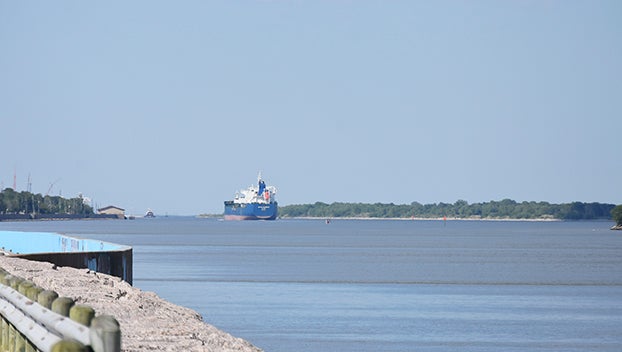MOORE OUTDOORS: Questions are answered
Published 12:21 am Sunday, November 6, 2016
Reader response to stories over the last month has been strong and engaging as local outdoors lovers prepare for fall fishing as well as deer and duck hunting.
This week I would like to answer some questions we have received as some of them have been asked numerous times and others are just downright interesting.
Here we go…
Q: I saw photos on Facebook of a horse in Vinton, La., that had been attacked by a hog. It looked terrible. Is this common?
A: I am not sure if it is common but it is certainly not unheard of among ranchers. I have spoken with several Hill Country ranchers who have had cattle attacked by hogs. In fact some reported more predation by hogs than coyotes on calves.
Hogs are omnivores who will gladly kill and eat live prey if available. Attacks on a full grown horse are rare considering the large number of hogs out there butt there are certain individual hogs that do not mind attacking large prey and even people. Keep in mind there are a handful of hogs out there in the 400-500 pound class which is larger than the average black bear and nearly the size of the average grizzly.
Q: You once wrote about how Hurricane Ike changed one of your favorite flounder fishing locations. Do you think that storm impacted Sabine Lake as a whole?
A: Both Rita and Ike did impact the ecosystem in a major way. Entire shorelines were altered, points shaved off by storm surge and debris put in the system. Enough time has picked that post-Ike fishing seems business as usual but if you were to really look at the habitat along the eastern shoreline of Sabine Lake you can see it is has change pretty dramatically from a decade ago.
Q: Is it true there are feral horses just across the border in Louisiana?
A: Yes it is. We think of wild mustangs in Nevada and Utah but we have wild horses just a few miles away in Louisiana.
I am not sure of the population status in area like Starks and Fields but I have heard of people catching them to domesticate. Fort Polk in Leesville, La. has quite the population and seeing one over there is pretty commonplace.
Q: Is there a particular area you think holds big trout that hardly anyone fish in the Sabine Lake area?
A: There are certain stretches of the channel that if you were to look at the shell along the shorelines, amount of baitfish and other factors should hold some big fish from time to time. I have a feeling the stretch of shoreline between the causeway and Keith Lake on both the north and south sides of the channel has some huge fish that trade between the deep and shallow. How to catch them in that area is a whole other challenge.
Q: Do you think there are any 10-pound bass in our local bayous?
A: No. It is possible but unlikely. Ten pounders are a rarity on Rayburn and Toledo Bend when you look at the overall picture. We just don’t have the habitat and right conditions to produce fish of that size with any frequency here.
Q: What is better redfish bait for bull redfish: crab or mullet?
A: Neither. A live croaker up to about eight inches long is far and away the best bull redfish bait. Out of crab or mullet, I would go with crab in the surf and mullet at the jetties. But if you can get live croaker fish with it.
Q: Do you wear blaze orange when hunting on private property?
A: Yes I do.
“Blaze orange is not mandatory in Texas unless you’re hunting on public land, but it makes a lot of sense,” said Texas Parks & Wildlife Department Hunter Education coordinator Steve Hall in a recent pre-opening day statement.
“Deer cannot see color, but other hunters can.”
Hall also gave a good reminder about tree stand accidents.
“The most unreported of all hunting accidents are falls from elevated hunting blinds or tree stands. If you’re going to be hunting from a tree stand, make sure to use a Tree-stand Manufacturer’s Association-approved tree stand and a TMA approved fall restraint device.”
While tree stands see a fair amount of use in East Texas according to TPWD, many more hunters used elevated blinds or tripods accessible by ladder.
“Most tree stand incidents occur while climbing into or out of the stand,” Hall said. “That means that a hunter should be tied in from the ground, back to the ground using an approved climbing system and maintain three points of contact while climbing — either two hands and one foot on the ladder at all times, or two feet and one hand.”
“Use a haul line to bring your unloaded rifle up once you are safely in your blind, then, with your firearm unloaded, lower it with the haul line before climbing down,” Hall said.
•
To contact Chester Moore, e-mail him at chester@kingdomzoo.com. You can hear him on “Moore Outdoors” Fridays from 6-7 on Newstalk AM 560 KLVI or online at www.klvi.com.)





